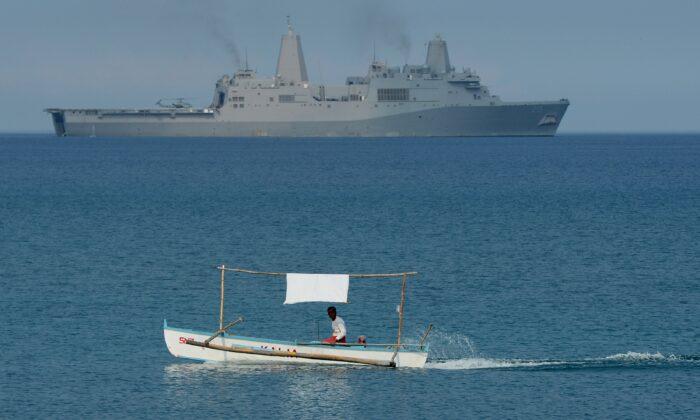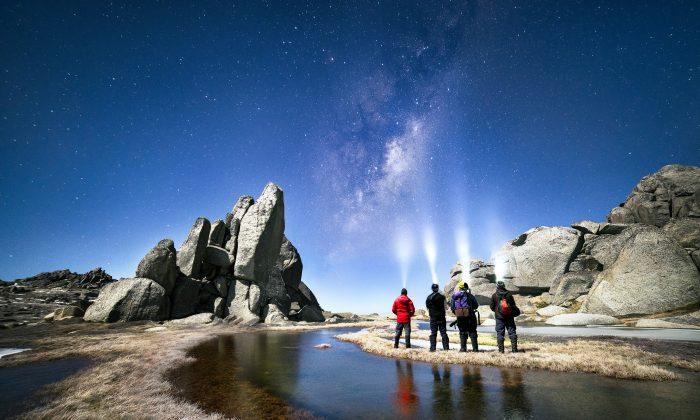As American Samoa recovers from a devastating tsunami and the Asia Pacific region rumbles with earthquakes of unsettling regularity, Australia’s vulnerability to tsunamis is now the subject of some concern.
Professor Dale Dominey-Howes, an associate professor of geology and a specialist in disaster management at the University of New South Wales, says Australia is not immune from a tsunami event.
The north-west shelf in western Australia is the most vulnerable area in Australia to a serious tsunami, he said, but there are plenty of other areas that could be hit by a big wave.
“Theoretically, any of the eastern seaboard of Australia is at risk of a tsunami generated off South America or anywhere in the Pacific,” he told The Epoch Times.
Two quakes measuring 7.8 and 7.3 magnitude were experienced 10 minutes apart some 180 miles from Vanuatu around 9 a.m. on Oct. 6. Those quakes sparked a tsunami alert for the Bowen and Mackay areas of North Queensland.
Professor Dominey-Howes said things were tense in his office as the Bureau of Meteorology analyzed the data coming in from Australia’s new tsunami warning system. Luckily, a tsunami was not generated and the warning was dropped within the hour.
Likelihood of Tsunami Hitting Populated Coast
Professor Dominey-Howes says you have to look at the history of tsunamis in Australia as one aspect of determining the risk and possibility.
Australia has, in fact, experienced over 30 tsunamis in the last 200 years, with one on the east coast a standout.
“The largest recorded wave was associated with the 1960 Chilean tsunami and that had a wave height at shore of 10 meters [32.8 feet] in New South Wales,” he said.
While there was no loss of life in the 1960 event, damage to boats and coastal infrastructure is known to have occurred.
Vulnerable Areas in New South Wales
Geophysicist Dr. Paul Somerville said there are a number of vulnerable areas up and down the east coast of Australia.
Dr. Somerville produced a report on the risk of tsunamis for the New South Wales (NSW) government in 2007.
The report, produced by Risk Frontiers at Macquarie University, defined Batemans Bay in the south and Umina Beach and Macmasters Beach north of Sydney as the most vulnerable areas to a tsunami.
Dr. Somerville said the findings were based on a range of data, including historical records of earthquakes, the strength and frequency of those earthquakes, the size of previous tsunamis, coastal populations, and the configuration of the coastline.
Ten other regions in NSW were also identified as less risky, but also vulnerable. They were Manly, Mona Vale, the Swansea and Tuggerah lakes north of Sydney, along with Kurnell, Cronulla, Shell Harbor, Huskisson, Nelson Bay, Conjola, and Merimbula in the south.
Causes of Tsunamis
Not all tsunamis are caused by earthquakes, but those that have reached Australian shores have been.
They occur when an earthquake causes vertical movement of the sea floor over a large area. Tsunamis can travel in all directions and may reach speeds of 500 mph in deep ocean areas. As they approach shallow water, their speed decreases, but their height increases.
Dr. Somerville said the size of a tsunami is determined by the size of the earthquake, which would normally exceed 8 on the Richter scale to create effects on land.
The level of the tide, however, is also a significant factor in terms of the reach of the quake. A high tide is estimated to increase the effects on land by a factor of four, he said.
Rising sea levels due to climate change have also been factored in. Dr. Somerville said their report estimated that a rise in sea level of one meter (3.28 feet), as predicted by climate change analysts, combined with the effects of a high tide, could increase the impact of a tsunami on land by 10 times.
The New South Wales Department of Environment Climate Change and Water (DECCW) said that it is working with the NSW State Emergency Services to assess tsunami risk along the NSW coast.
“The project is only partly completed and the next stage is due to be completed by July 2010,” a spokesperson from the DECCW said. “It is anticipated that the full report and findings will be released in the second half of next year.”




Friends Read Free